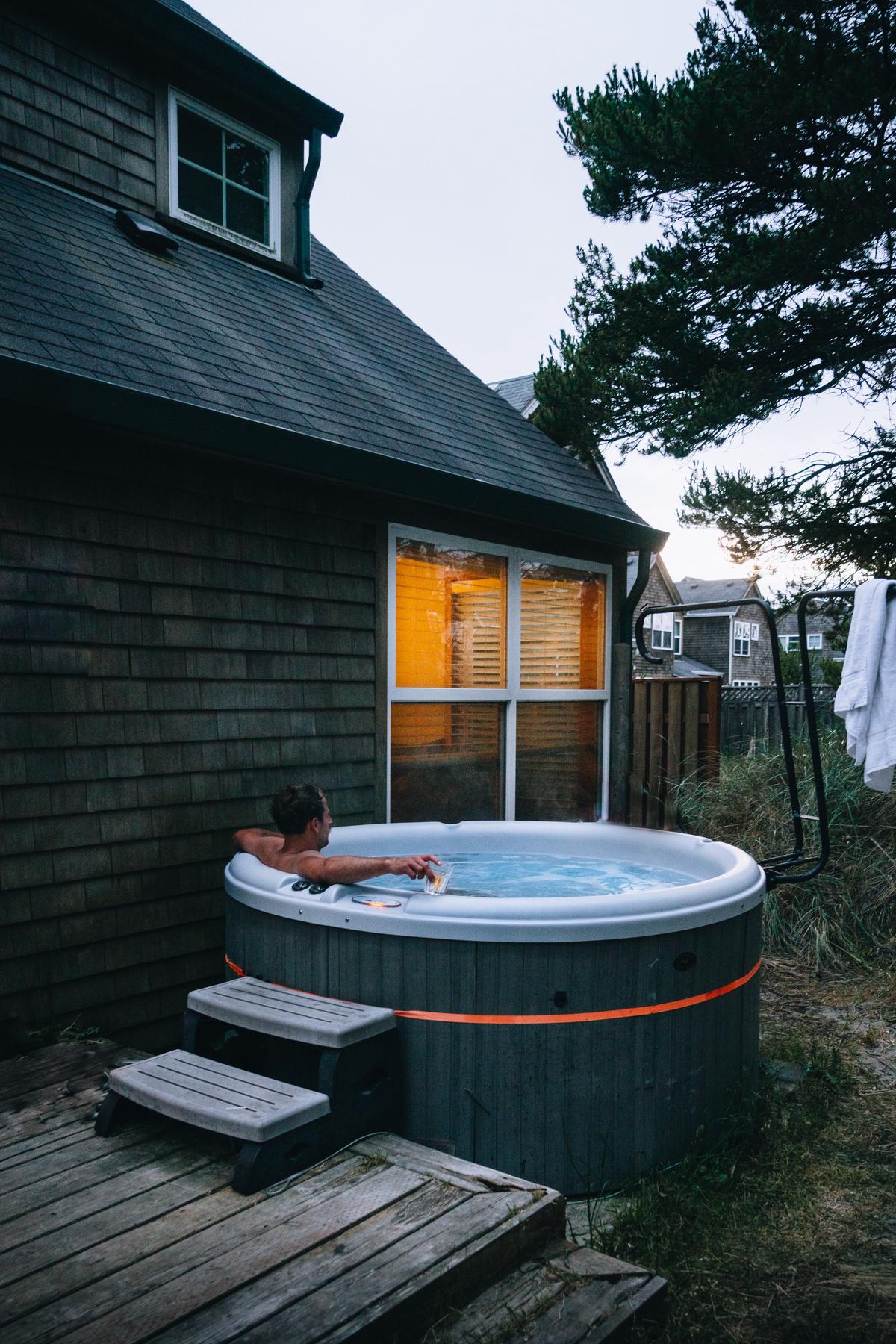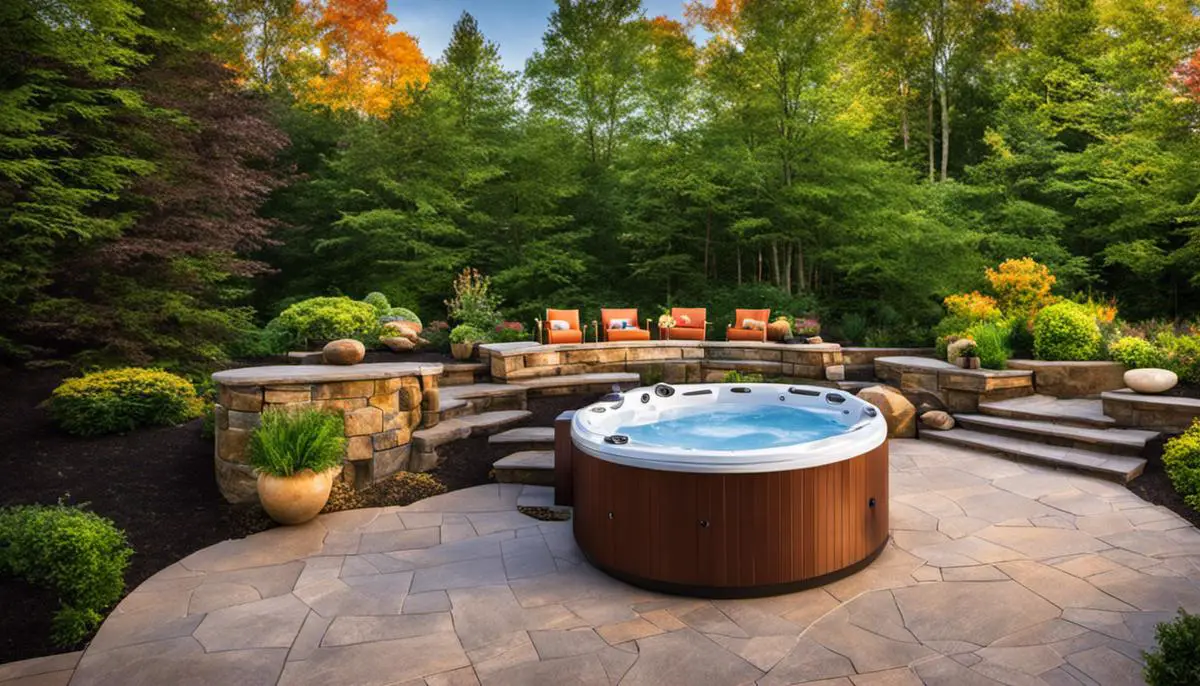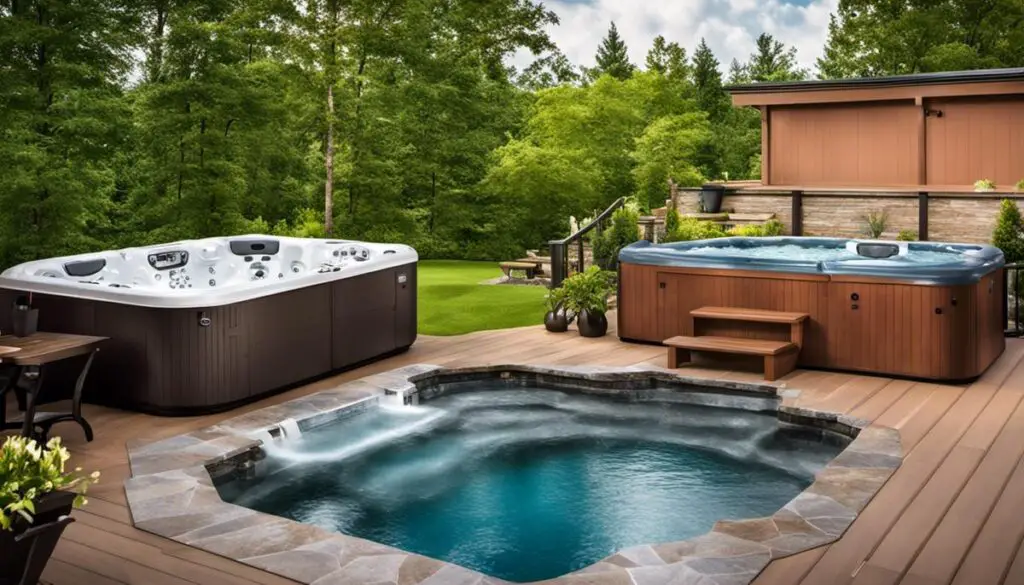Whether you’re seeking relaxation or entertaining friends and family, investing in a hot tub can be an incredible addition to your home. It’s an oasis of self-indulgence right in your backyard, but you might wonder about the costs associated with this endeavor.
Different factors come into play, be it the type of the hot tub, its installation, operation, or potential additional expenses. This resource provides a comprehensive breakdown of these costs, highlighting the various types of hot tubs available in the market, specifically focusing on their price range and unique features—which would help you determine the optimal choice that ticks all the boxes for your budget and lifestyle.
Types of Hot Tubs and Their General Pricing
Portable Hot Tubs
Portable hot tubs are popular due to their versatility and relatively low cost. These standalone tubs can be placed anywhere in your home – indoors or outdoors, as long as there is a suitable power source and water drainage system.
Portable hot tubs typically come with built-in heating and filtration systems; some models even include hydrotherapy jets. The materials used in portable hot tubs are generally acrylic or thermoplastic, and the tubs are often surrounded by a wooden or synthetic cabinet.
Regarding pricing, portable hot tubs generally range from $3,000 to $10,000 depending on the size, model and features.
Inflatable Hot Tubs
Inflatable hot tubs are a cost-effective and convenient solution for those who do not want or cannot accommodate a fixed tub. Made from PVC or vinyl, these hot tubs are easy to set up and dismantle, making them perfect for use in different locations or temporarily.
While inflatable hot tubs lack some features of permanent hot tubs, such as seating or powerful jets, they still offer heated water and some models do include air jets for a relaxing experience. Depending on the size and features, inflatable hot tubs can cost anywhere from $500 to $1,500.
Built-In Hot Tubs
Built-in hot tubs are often integrated into an existing pool or installed as a standalone feature in a deck or patio. They are made from durable materials such as concrete, fiberglass or stainless steel, and can be customized in terms of shape, size and features.
Built-in hot tubs often come with high-end features like multiple seating, advanced hydrotherapy jets, LED lighting, and more. Due to their customized nature and required professional installation, these hot tubs are generally the most expensive option.
A typical built-in hot tub can cost between $10,000 to $25,000 or even more with added features and customization.
Saltwater Hot Tubs
A newer trend in hot tubs, saltwater hot tubs use a salt cell to produce chlorine, which sanitizes the water. The advantage of these tubs is that they require lower levels of chlorine, making the water softer on the skin and less irritating to the eyes.
They also require less maintenance and fewer chemical replacements, making them more eco-friendly and cost-effective in the long run. These tubs can either be portable or built-in and are generally made from materials like acrylic or thermoplastic.
The price range for a saltwater hot tub can start from $4,000 and go up to $15,000 depending on materials, size and features.
Overview of Wood-Fired Hot Tubs
For those desiring a quaint, rustic hot tub experience, a wood-fired model could be the perfect fit. These uniquely appealing hot tubs operate with an internal or external wood stove, thereby eliminating the need for electricity.
Typically crafted from rich cedar or redwood, they stand apart with their simple working mechanism and minimalistic features. Due to these straightforward attributes, wood-fired hot tubs are more affordable than their high-tech counterparts.
The price spectrum generally falls between $3,000 and $7,000, with variance based on factors such as size, wood selection, and added features like seating arrangements and jet systems.

Photo by lifeof_peter_ on Unsplash
What Are the Pros and Cons of Gravel Installations for Hot Tub Placement?
When it comes to hot tub placement, considering the pros and cons of gravel installations is essential. Gravel offers excellent drainage, preventing water pooling around the tub. It also helps with leveling irregular surfaces. However, gravel can be uncomfortable to walk on and might require ongoing maintenance to prevent weeds and displacement.
Installation and Operational Costs
Estimating Hot Tub Installation Expenses
When budgeting for a hot tub, it’s important to factor in the associated installation costs, as they can significantly contribute to the overall expense. The type of model and specific placement location can drastically influence these costs.
For instance, in-ground models often necessitate more elaborate installations, possibly including excavation, concrete work, and higher-end equipment.
As you might expect, these additional requirements can increase installation costs, ranging between $5,000 to $15,000.
Conversely, portable above-ground models, which merely require a level surface for positioning, can considerably reduce these costs, with expenses potentially falling between a mere $300 to $1,000.
Electrical Installation
Unless you’re purchasing a plug-and-play hot tub, hiring an electrician will likely be necessary to ensure safe and proper hot tub installation.
The electrical work required for a hot tub typically involves a 220-volt outlet and dedicated circuit, which could run between $500 and $1,500.
More complicated setups involving additional wiring or new breakers could increase the cost.
Landscaping Costs
Depending on where you plan on installing your hot tub, you may have to consider landscaping costs. Landscaping can involve everything from leveling the ground, constructing decks or patios, and creating a beautiful and relaxing environment around the hot tub.
These costs can further drive up the total expense, potentially adding anything from $1,000 to $10,000 to the overall project, depending on the complexity and scale of the landscaping work.
Operational Costs
Besides installation, owning a hot tub comes with regular operational costs. This includes energy costs, depending on the hot tub’s size, usage, insulation, and your local electricity rates. On average, running a hot tub can cost between $10 to $50 per month.
Cleaning and Maintenance Costs
Regular cleaning and balancing chemicals are also a necessary outlay for a hot tub owner. Cleaning supplies and chemicals can cost between $10 to $30 per month, while filters may require replacement every 1-2 years at a cost of between $30 and $60 per filter.
Regular maintenance, including checks for leaks, pump or heating element damage, and routine inspections, is also worth considering.
Opting for professional maintenance services can set you back anywhere from $150-$300 per check-up.
Understanding the Total Costs of Hot Tub Ownership
Owning a hot tub presents costs that extend beyond the initial expense. Installation, electrical wiring, enhancing your landscape, and consistent costs like energy consumption, routine cleaning, and maintenance are all factors to consider.
Hence, it is crucial for prospective hot tub owners to fully comprehend the financial obligations involved before deciding to purchase and install.

– Can the Cost of Hot Tub Maintenance Impact the Overall Cost of Owning a Hot Tub?
When considering the overall cost of owning a hot tub, the cost of maintenance plays a significant role. By following the suggested hot tub maintenance tips, owners can prolong the lifespan of the tub and minimize repair costs in the long run. Regular maintenance can ultimately impact the overall cost of owning a hot tub.
Potential Additional Expenses and Ways to Save
Factoring in Additional Expenses for Hot Tub Ownership
Alongside the initial investment, several other potential expenses should be factored into your budget, such as electrical system enhancements or buying necessary hot tub accessories.
One considerable expense that is often overlooked at the onset is the potential need for electrical modifications. Powering a hot tub demands significant electrical capacity, frequently necessitating a dedicated circuit’s installation.
A certified electrician must carry out this task. Depending on your specific requirements and the existing infrastructure, the cost for such an upgrade can vary between $300 to $1,500.
Further, accessories and additional needs such as covers, steps, cleaning tools, among others, add to the cost. A good quality cover can minimize heat loss, thereby making the hot tub more energy-efficient.
Cover costs can range from $50 to $500, dependent on the quality and design. Steps, which are instrumental for safely using the hot tub, generally cost between $100 to $200. The purchase of chemical balancers and maintenance tools may also add to the overall expense.
Ways to Save on Hot Tub Costs
Despite the potential additional expenses, there are several ways to save money when purchasing, installing, and operating a hot tub.
When purchasing, it’s wise to consider shopping during sales or off-peak times. Dealers often offer discounts during slower periods in the year. Also, consider shopping around and negotiating for the best price. Ask if the quoted price includes delivery and installation or if any active promotions could be applied.
For installation, if your property’s electrical system needs upgrading, try to find a licensed electrician who offers competitive rates. It might be helpful to get multiple quotes to ensure the best deal. Once your hot tub is installed, save on operational costs by investing in energy-efficient accessories like insulated covers and energy-saving modes.
Lastly, adopting a regular maintenance schedule can help avoid costly repairs down the line. Regularly checking and adjusting your hot tub’s chemical balance can prevent damage to the tub and the need for costly repairs. Also, proactive care of your hot tub cover can increase its lifespan, reducing the frequency of replacement.
Hot tubs are a significant investment, but by considering potential extra costs and taking steps to save where possible, the expense can be managed more effectively.

Photo by sextoabismo on Unsplash
Before diving into the soothing waters of a hot tub, understanding the potential costs can help ensure a smooth and rewarding journey.
This resource navigated you through these expenses, giving a clear picture of what you might expect to spend on different types of hot tubs, installation and operation, along with potential extra costs you might encounter—and how you can save on them too.
Shopping for a hot tub may seem intimidating, but with this knowledge, you can make informed decisions to enhance your outdoor living space and create your own resort-like escape.


